What is Medium Transmission Line?
Medium Transmission Line Definition
A medium transmission line is defined as a transmission line with a length between 80 km (50 miles) and 250 km (150 miles).
A medium transmission line is defined as a transmission line with an effective length more than 80 km (50 miles) but less than 250 km (150 miles). Unlike a short transmission line, the line charging current of a medium transmission line is appreciable and hence the shunt capacitance must be considered (this is also the case for long transmission lines). This shunt capacitance is captured within the admittance (“Y”) of the ABCD circuit parameters.
The ABCD parameters of a medium transmission line are calculated using a lumped shunt admittance and a lumped series impedance. These parameters can be represented using three different models:
Nominal Π representation (nominal pi model)
Nominal T representation (nominal T model)
End Condenser Method
Let’s now go into the detailed discussion of these above-mentioned models, deriving the ABCD parameters for medium transmission lines.
Importance of Shunt Capacitance
Shunt capacitance is significant in medium transmission lines and must be considered due to the line charging current.
Nominal Π Mode
In case of a nominal Π representation (i.e. nominal pi model), the lumped series impedance is placed at the middle of the circuit whereas the shunt admittances are at the ends. As we can see from the diagram of the Π network below, the total lumped shunt admittance is divided into 2 equal halves, and each half with value Y ⁄ 2 is placed at both the sending and the receiving end while the entire circuit impedance is between the two.
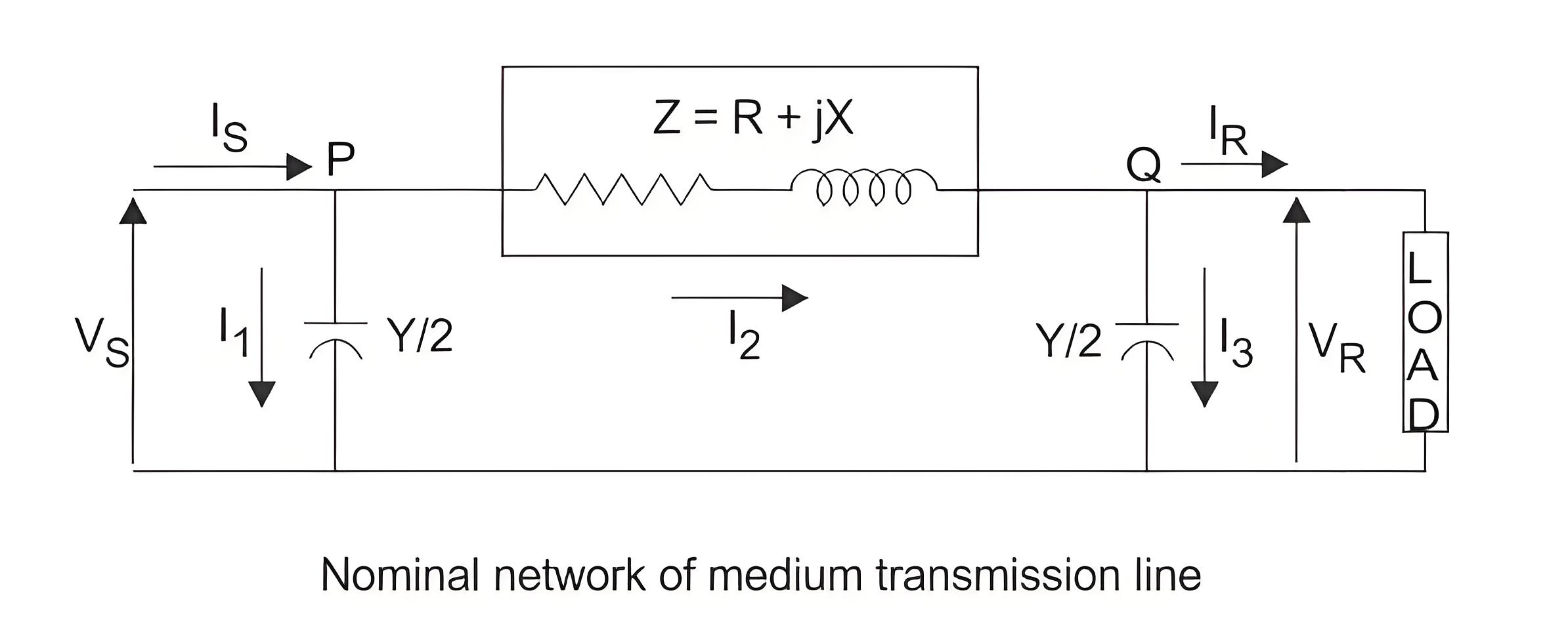
The shape of the circuit so formed resembles that of a symbol Π, and for this reason, it is known as the nominal Π representation of a medium transmission line. It is mainly used for determining the general circuit parameters and performing load flow analysis.
Here, VS is the supply end voltage, and VR is the receiving end voltage. Is is the current at the supply end, and IR is the current at the receiving end. I1 and I3 are the currents through the shunt admittances, and I2 is the current through the series impedance Z.
Now applying KCL, at node P, we get.
Similarly applying KCL, to node Q.
Now substituting equation (2) to equation (1)
Now by applying KVL to the circuit,
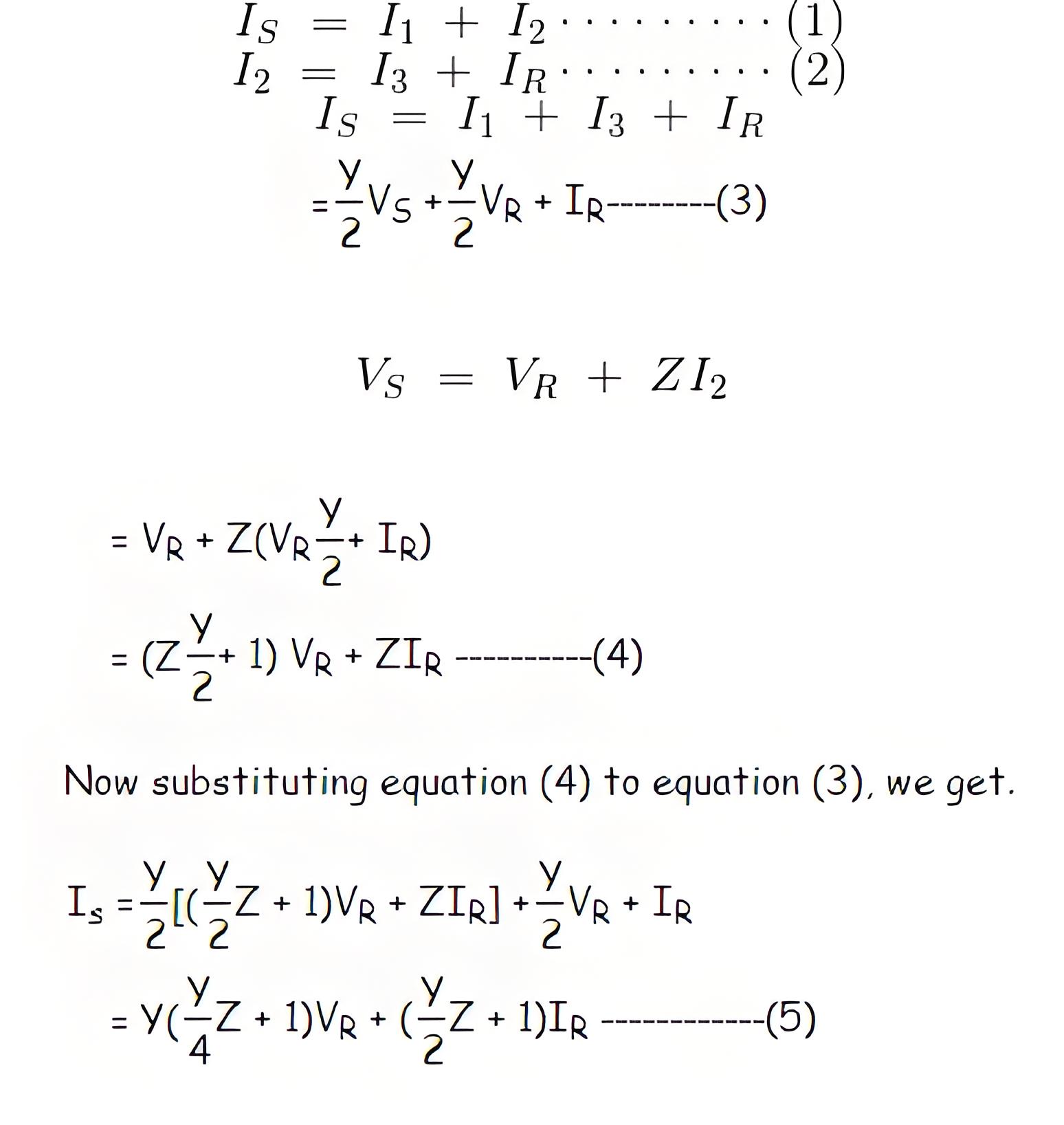
Comparing equation (4) and (5) with the standard ABCD parameter equations
We derive the ABCD parameters of a medium transmission line as:
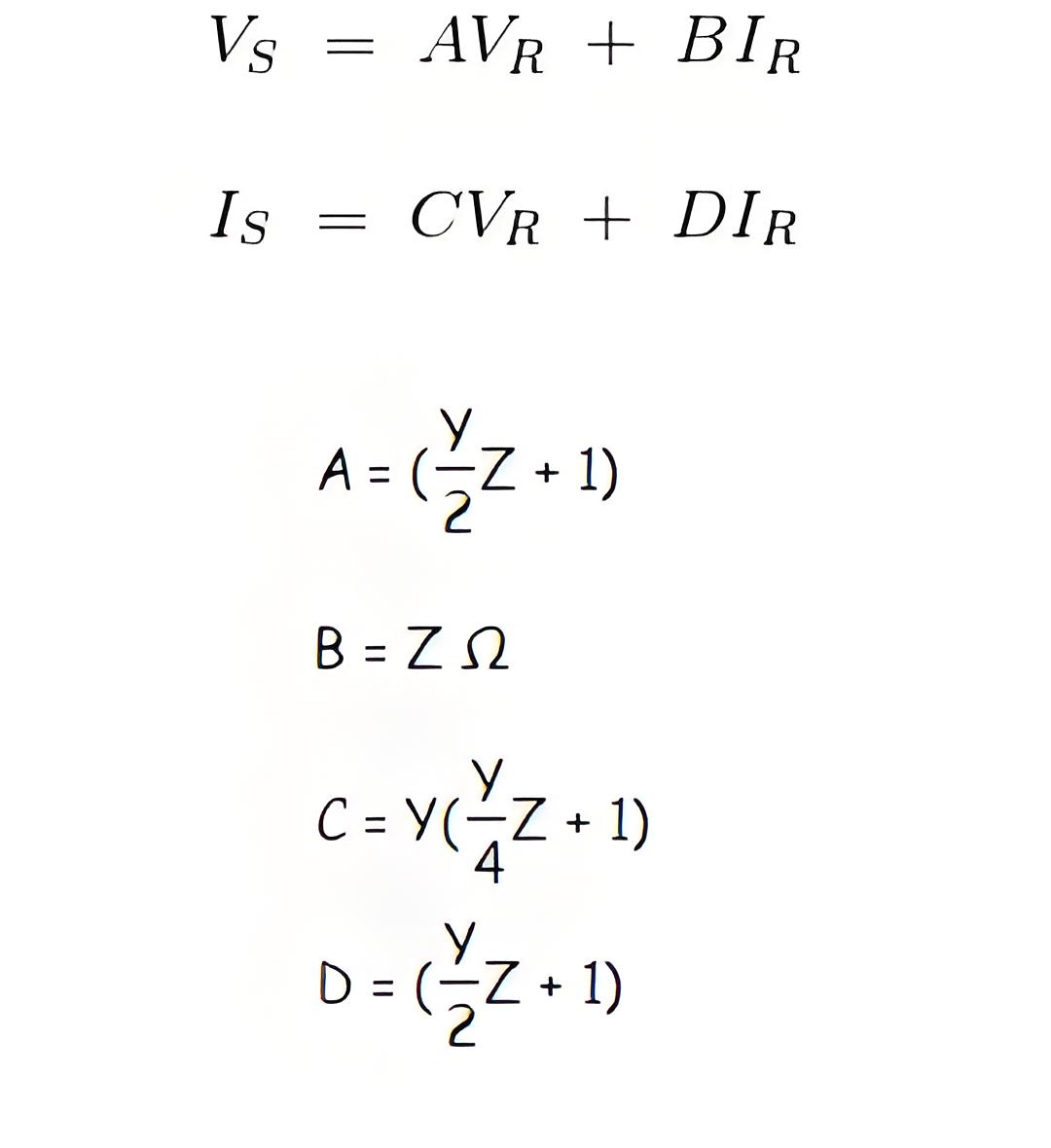
Nominal T Model
In the nominal T model of a medium transmission line the lumped shunt admittance is placed in the middle, while the net series impedance is divided into two equal halves and placed on either side of the shunt admittance. The circuit so formed resembles the symbol of a capital T, and hence is known as the nominal T network of a medium length transmission line and is shown in the diagram below.
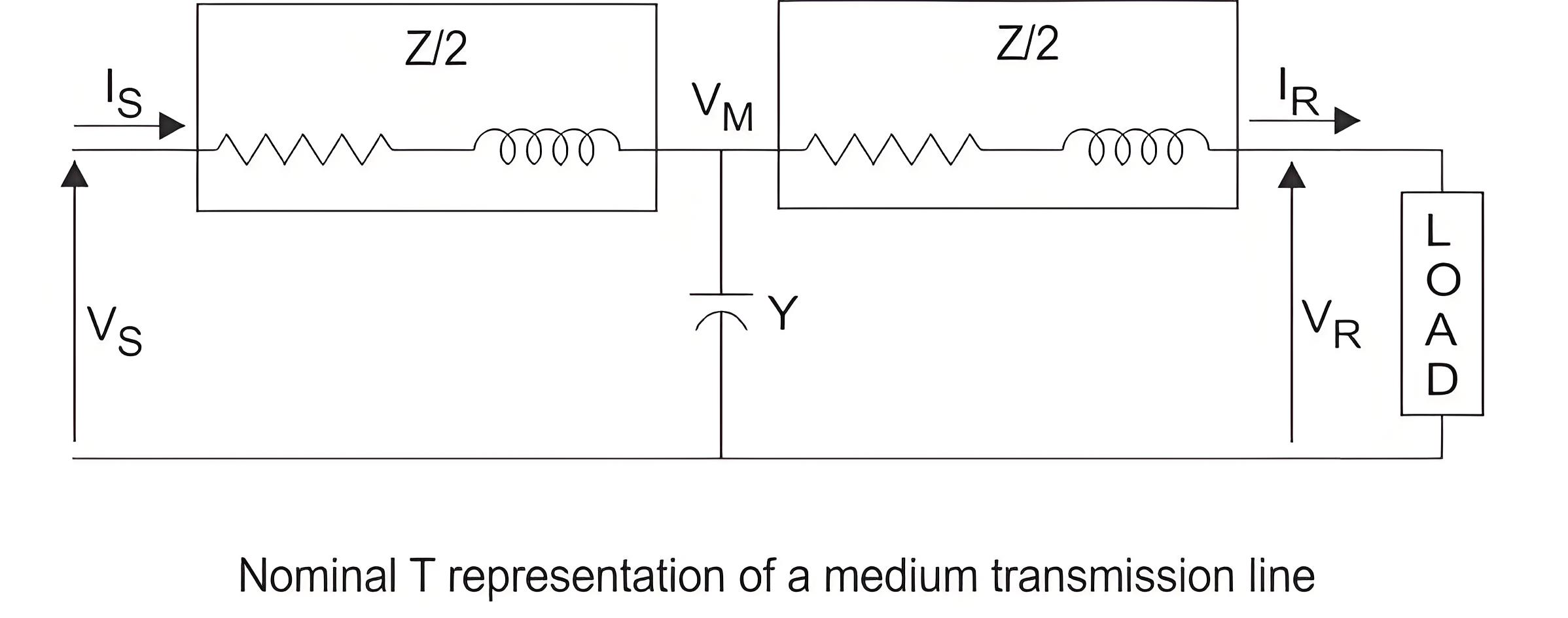
Here also Vt networks and Vr is the supply and receiving end voltages respectively, and
Is is the current flowing through the supply end.
Ir is the current flowing through the receiving end of the circuit.
Let M be a node at the midpoint of the circuit, and the drop at M, be given by Vm.
Applying KVL to the above network we get,
Now the sending end current is,
Substituting the value of VM to equation (9) we get,
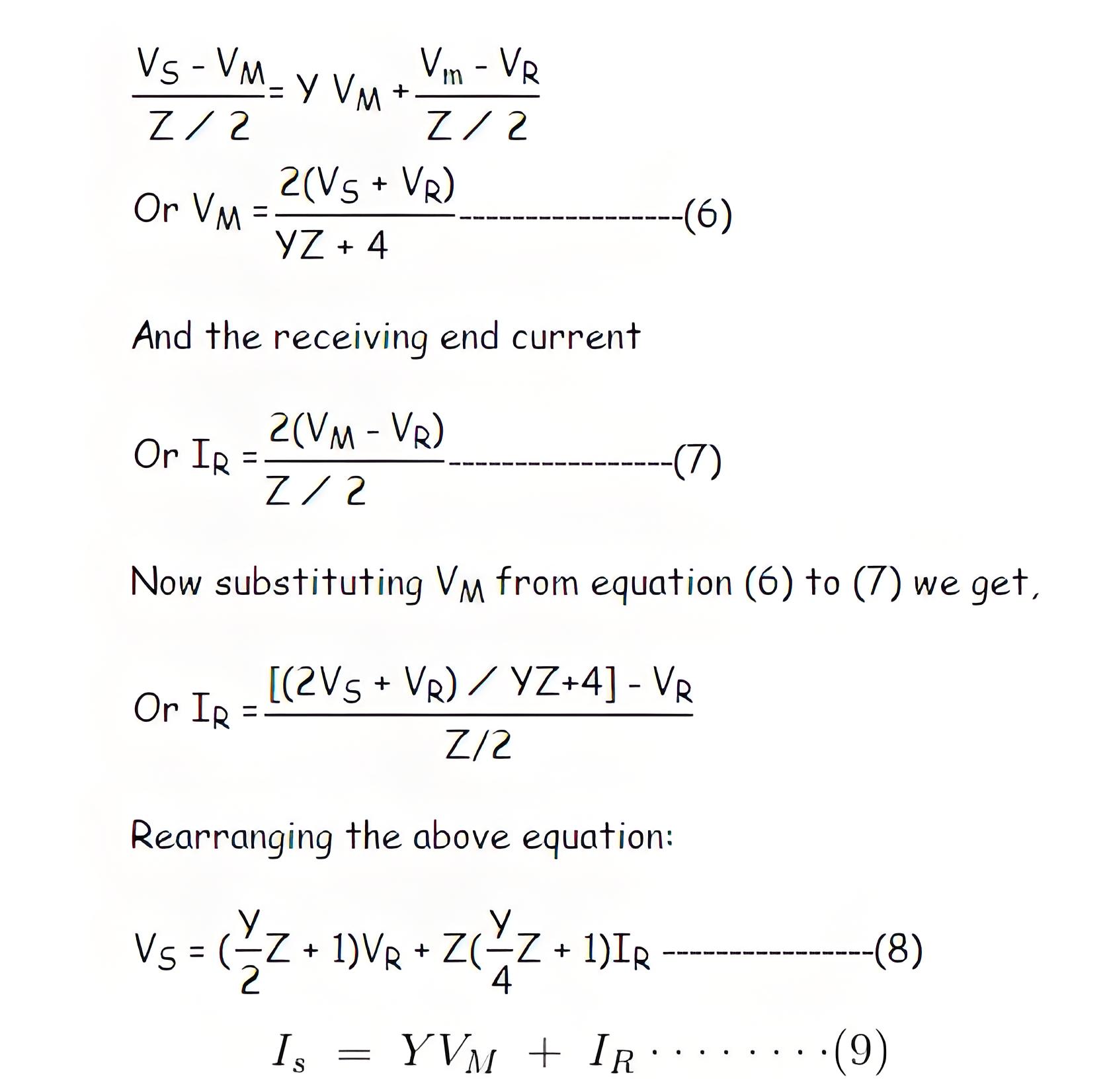
Again comparing equation (8) and (10) with the standard ABCD parameter equations,
The parameters of the T network of a medium transmission line are
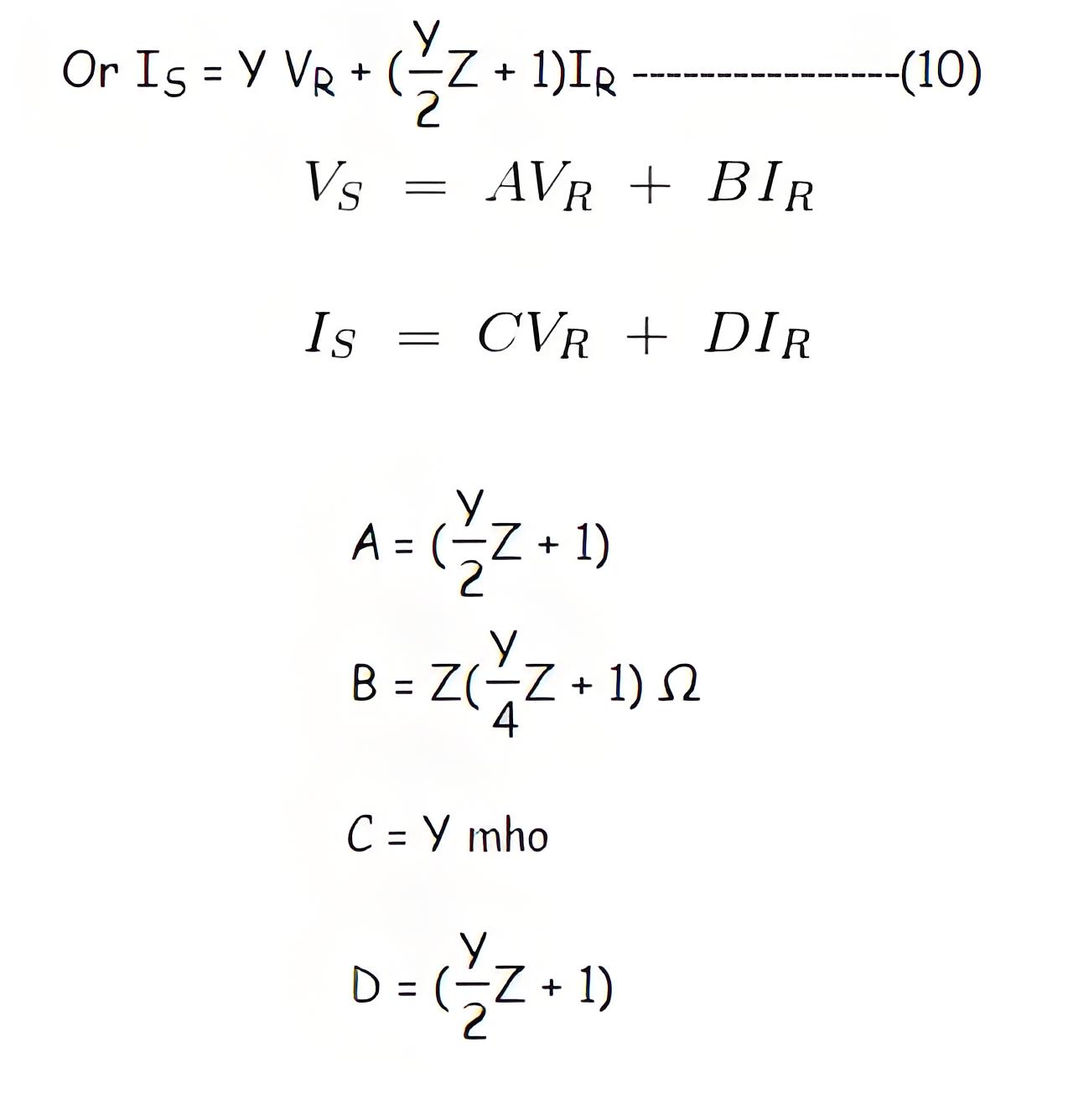
ABCD Parameters
The ABCD parameters for medium transmission lines are calculated using the lumped shunt admittance and series impedance, crucial for analyzing and designing these lines.
End Condenser Method
In the end condenser method, the line capacitance is concentrated at the receiving end. This method tends to overestimate the effects of capacitance
The Electricity Encyclopedia is dedicated to accelerating the dissemination and application of electricity knowledge and adding impetus to the development and innovation of the electricity industry.













